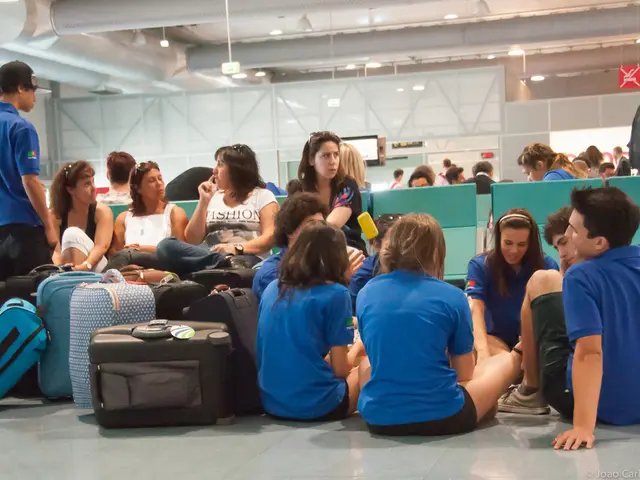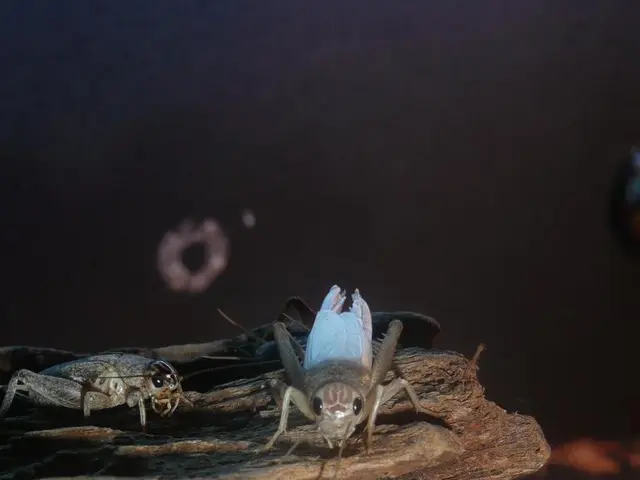Instructions for Creating Accurate Facial Plaster Molds
For a successful face casting using alginate and plaster bandages, it is essential to prepare a clean, well-ventilated workspace with protective materials to manage mess and ease cleanup. Here's a step-by-step guide to help you prepare your workspace effectively.
Preparing the Workspace
- Cover surfaces: Use plastic sheeting or old towels to cover tables, chairs, and floors to catch alginate and plaster drips. Both materials can be messy and difficult to remove once dried.
- Organize materials: Gather all necessary supplies within reach, including alginate powder, mixing bowls, water, plaster bandages, release agent (like petroleum jelly), brushes, protective gloves, and a willing subject.
- Ventilation: Ensure the workspace has good ventilation, as some plaster bandage adhesives and dust might be irritants.
- Safety and hygiene: Prepare to protect the model's hair and clothing with a shower cap or plastic wrap, and cover the model's shoulders with a cape or towel. Have an assistant if possible to help with mixing, application, and timing.
- Water access: Keep clean water nearby for mixing and cleaning brushes and hands during and after the casting process.
- Comfort: Prepare seating for the model that is stable and comfortable, as they must hold still while the alginate sets.
Mixing the Alginate and Plaster
- Measure equal parts of alginate powder and cool water (about 350 ml each for a full face mold) and mix them quickly and thoroughly to create a uniform paste.
- Mix Plaster according to instructions to ensure proper mixing ratios.
Casting the Face
- Apply a thin layer of vaseline along the hairline, eyebrows, and facial hair to help prevent alginate from sticking to these areas.
- Apply the alginate mixture to the castee's face, ensuring even coverage and avoiding thick and thin spots, especially around the more intricate areas such as the cheekbones and chin.
- Reinforce the alginate layer with plaster bandages by cutting them into strips (one to two inches wide and three to four inches long for general areas, smaller strips for detailed areas like the nostrils) and applying them over the alginate while it's still tacky.
- Pour the plaster slowly to keep out air bubbles.
- Wait for the plaster to warm up, then cool down, signalling it's fully set.
Cleaning Up
- Clean up any remaining alginate or plaster promptly to prevent drying.
- Don't pour leftover materials down the drain, instead, allow them to harden and discard solid waste properly.
Removing the Cast
- Gently ease your fingers under the edges of the plaster mold.
- Carefully remove the mold from the castee's face once the bandages have set fully, taking care not to damage the mold during removal.
- To achieve a flawless face cast, addressing any imperfections or holes in the alginate mold is necessary.
- Remove Cast from Mold Safely, ensuring nostril areas stay intact for a clean removal.
By following these steps, you can ensure efficiency and safety during the face casting process, minimizing cleanup time and maximizing comfort for both the caster and model. These best practices are general professional guidelines, as direct workspace-specific instructions were not found in the search results provided.
Read also:
- Pharmaceutical workplace safety is bolstered by the implementation of Safety Eyewear Programs.
- Slower Electric Vehicle Adoption in India Compared to US, EU, and China According to NITI Aayog Report
- Real-time AI intelligence from iRasus enhances electric vehicle battery safety.
- Emerging Food Fads for 2025 Nutritional Landscape




